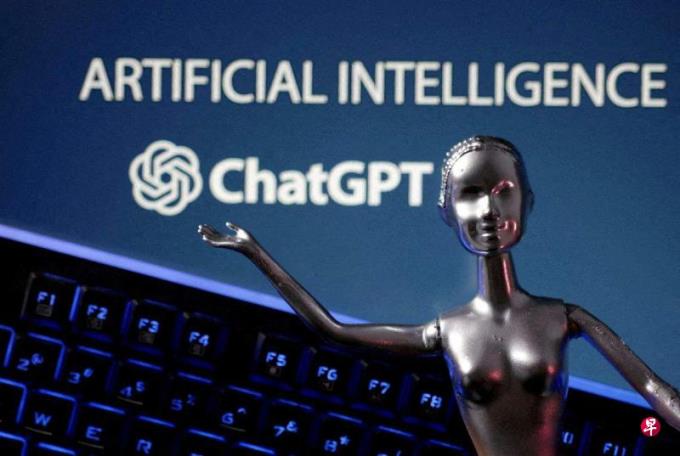
Not long ago, I went to see a contemporary art exhibition with several artistic friends.Contemporary art is an art of ideas, and everything can become artworks.If the viewer wants to know what a contemporary art works are, they must shift from sensory experience to the ideological level.The PROOF of Personhood exhibited at the Singapore Art Museum, with the theme of "AI challenging human identity and authenticity", has also become a starting point for many people to think about the development of artificial intelligence (AI).
Remember that shortly after ChatGPT, people's attention is concentrated in AI, and in which areas can shine, many people are worried that AI will replace many of human work.Of course, some children said that they hope that AI has evolved better and better. They not only eager to chat with AI, and hope that AI will become a powerful assistant, but also hopes to be friends with AI.But this exhibition surpasses these popular topics and proposes a philosophical issue: What exactly does human and human creativity mean in the AI era?When we face the "digital people" created by deep synthetic technology in the exhibition, in the face of all kinds of photos, signatures, and posters that are difficult to distinguish between true and false, and after entering a certain artist data, painting and sculpture generated by algorithm are used.At this time, we can't help but question the irreplaceability of human identity and question the authenticity of many things.
The exhibits of this exhibition use a lot of AI deep synthesis technology, reminding me of a TV show fragment that I have watched.Last year on the stage of American variety show America's Got Talent, Simon Cowell, one of the show's judging, watched the singer on the stage becoming him and sang songs simultaneously on the stage of the stage, which surprised him.EssenceThis was done by artificial intelligence company Metaphysical's camera using AI technology. At that time, it was used by synthetic media technology. It was a digital experience generated by AI.
This synthetic video is very realistic, and it is difficult to distinguish the content of the normal shooting of ordinary digital cameras.People in the AI industry generally call it "deep synthesis", but they are unwilling to call it "deep forgery."Because "deep synthesis" technology can be used in many areas that are helpful to humans, including the field production, education, business and other fields.The "deep forgery" represents the abuse of deep synthesis technology, which is a problem that we cannot avoid and deny. For human society, it is a tingling.As the saying goes, "seeing is true", but now this basic cognition has been subverted by reality, and the original social trust system is undergoing challenges.
What exactly is true?Since the Russian and Ukraine War and the Harbin conflict, many false videos have been circulated on the Internet, affecting people's value judgment. However, in -depth falsification has not only caused false information.As early as 2017, the US social news website Reddit had passed on the face of movie stars' faces and was grafted to video clips in pornographic movies.People may be fortunate that they are not politicians and stars, and don't worry about this problem.
But in September this year, a case of using AI in -depth falsification technology in Spain made nude photos of girls.The victims were 11 years old and 17 years old. They were faked on the campus and on the Internet and the Internet, and some were ransomed.The suspect involved was 11 minors.After the report was reported, it once again caused people to worry about the abuse of AI technology.
Do not display on the Internet
When we were at the exhibition hall, a staff member took the initiative to introduce the exhibits to us. After his reminder, we knew where the celebrities in the photo were faked in depth.The staff member claimed to be an IT practitioner before. He also said that many years ago, the industry called for the development and application of AI technology. It was not until recent years that the governments of various countries have begun to pay attention to.It's too late! "And remind us to pay attention to protecting personal information, especially biological information, and the front photos on the face should not be displayed on the Internet.
In recent years, many countries have tried to incorporate the use of deep synthesis technology through rapid legislation and regulating deep synthesis technology, and incorporate the use of deep synthetic technology to include false information management.However, people in the AI industry believe that legislation is not the only effective means. Legislation is lagging and cannot keep up with technological development, so it is necessary to govern from the perspective of technological development and commercial ethics.For example, with the help of identification of identification technologies and traceability technology, the source labeling of synthetic videos; the AI industry must also be self -disciplined to form industry conventions and guidelines. At the same time, the public must also improve media literacy and strengthen identification capabilities.Such a flexible and diverse measure is conducive to the development of AI and preventing potential damage.
On November 1st and 2nd this year, the world's first AI Security Summit was held in the UK. 28 countries and the European Union jointly signed the Blachley declaration, emphasizing that AI may be abused, and countries have promised to be safe and responsible.The method is designed, developed, deployed, and used AI, but there are no specific measures and accountability mechanisms.
Our ordinary people may always be full of infinite expectations for the development prospects of AI because of ignorance.But at the same time, we also hope that a series of problems brought by the development of AI technology, governments of various countries will pay more attention. After all, there is a good saying that it is good to say, "seeing rabbits and taking care of dogs, not late;"
The author is a former media person and creator of children's books


